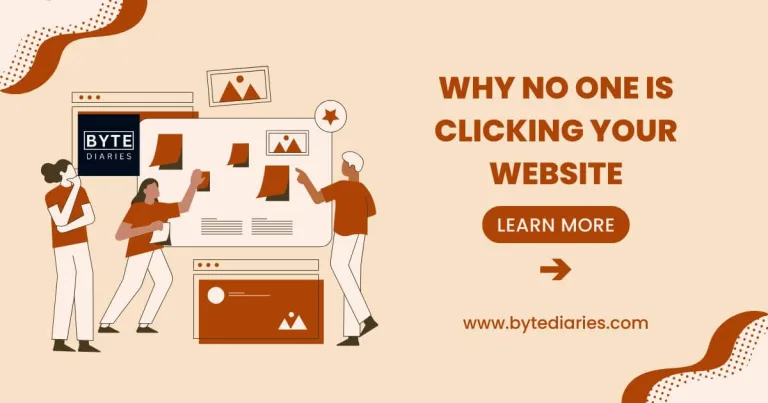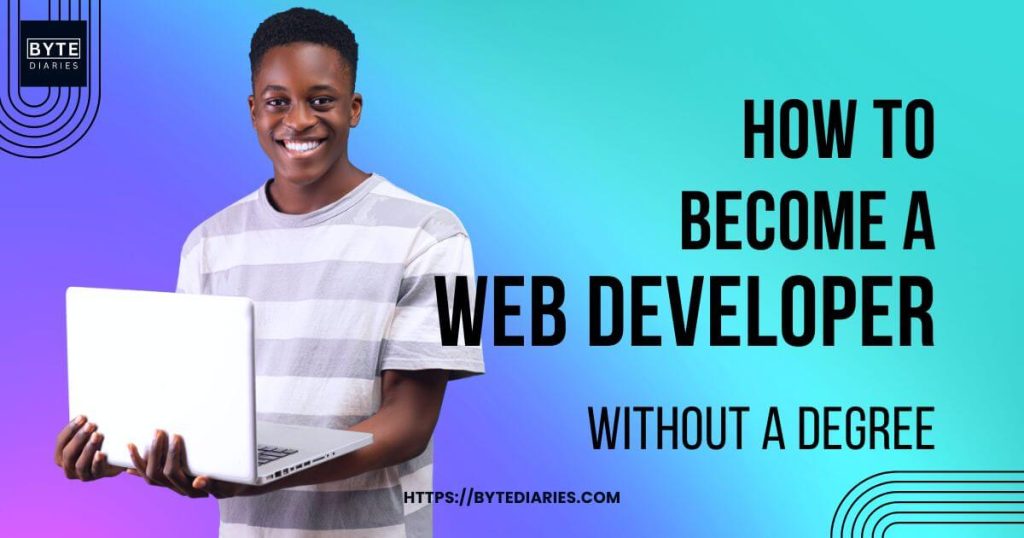Have you ever wondered why no one is clicking your website? You built a site, added great content, and expected visitors to start rolling in.
But instead, your site sits there unnoticed – like a store in the middle of nowhere.
If no one clicks on your website, there’s a reason for it (and a solution).
Maybe your site isn’t ranking well on Google, or your headlines don’t grab attention. Maybe your website loads too slowly, or your content isn’t solving real problems for visitors.
The good news? You can fix all of this, fast.
This guide will walk you through the most common reasons why your website isn’t getting clicks – and exactly how to fix them.
Table of Content
- Why No One is Clicking Your Website: Common Mistakes and Fixes
- 1. Your Website Isn’t Ranking on Google
- How to Fix It:
- 2. Your Website is Too Slow
- 3. Your Headlines Aren’t Engaging
- 4. Your Meta Descriptions Are Weak (or Missing!)
- 5. You’re Targeting the Wrong Keywords
- 6. Your Website Looks Outdated or Untrustworthy
- 7. Your Website Doesn’t Solve a Problem
- 8. Your Call-to-Action (CTA) Is Weak
- Final Thoughts
Why No One is Clicking Your Website: Common Mistakes and Fixes
1. Your Website Isn’t Ranking on Google
The biggest reason people aren’t clicking on your site?
They can’t even find it. If your site isn’t showing up on the first page of Google, most people won’t see it.
Why This Happens:
✅ Your website isn’t indexed by Google – If Google hasn’t added your site to its database, it won’t appear in search results.
✅ You’re not using SEO properly – Without optimized titles, keywords, and meta descriptions, Google doesn’t know well what your site is about.
✅ Your site has no backlinks – If other sites aren’t linking to you, Google sees your site as less trustworthy.
✅ Slow website speed hurts rankings – Google favors fast-loading websites in search results because users love it and Google prioritizes user experience a lot.
How to Fix It:
Step 1: Check if Google Knows Your Website Exists
1️⃣ Go to Google and type:
site:yourwebsite.com
2️⃣ If no results appear, Google hasn’t indexed your site.
3️⃣ Submit your site to Google Search Console and request indexing.
Step 2: Improve Your SEO
- Use Relevant Keywords – Find words your audience searches for using Google Keyword Planner.
- Optimize Your Titles & Headings – Make sure each page has a clear, keyword-rich H1 title and supporting H2/H3 headings.
- Write a Meta Description – This helps Google (and users) understand what your page is about.
Step 3: Get Backlinks to Build Authority
Google ranks sites higher if other reputable websites link to them.
✅ Submit your site to directories like Google My Business.
✅ Guest post on industry blogs and link back to your site.
✅ Ask customers, partners, or bloggers to link to your content.
Wanna learn more about SEO? View our SEO basics guide.
2. Your Website is Too Slow
Speed matters – a lot.
If your website takes longer than 3 seconds to load, 53% of visitors will leave before seeing your content.
How to Test Your Site Speed:
Go to Google PageSpeed Insights, enter your website URL, and click “Analyze.”
Your results will show:
🔴 Red (0-49): Your site is slow. Fix it ASAP.
🟡 Yellow (50-89): Decent speed, but could be better.
🟢 Green (90-100): Excellent speed—your site loads quickly.
How to Speed Up Your Website:
✅ Compress images using TinyPNG.
✅ Use modern image formats such as AVIF and WebP. They support better compression.
✅ Enable caching – If you’re using WordPress, install plugins like WP Rocket or WP Fastest Cache for faster loading, or ask your developer to enable caching and minimize assets.
✅ Choose a fast hosting provider – Cheap hosting slows your site down as they have limited resources and low power. Always choose better hosting.
3. Your Headlines Aren’t Engaging
Your headline is the first thing people see in search results. If it’s boring, they’ll scroll past your site.
Your headline plays a crucial role in whether they’ll click on your website.
A compelling headline grabs attention, sparks curiosity, and encourages people to take the next step – clicking through.
Writing better headlines can drastically improve your click-through rate (CTR), driving more traffic to your site and improving your SEO performance.
How to Write Headlines That Get Clicks:
✅ Use Numbers & Power Words – Example:
❌ “SEO Tips for Websites”
✅ “10 Easy SEO Hacks to Rank Higher in 2025!”
✅ Create Curiosity – Example:
❌ “How to Improve Website Traffic”
✅ “Why No One is Visiting Your Website (And How to Fix It)”
💡 Tip: Test your headlines using the free Headline Analyzer
4. Your Meta Descriptions Are Weak (or Missing!)
Your meta description is the short text below your title in Google search results. If it’s missing or unappealing, people won’t click.
A good meta description plays a vital role in improving your CTR (Click-Through Rate), which means more users will visit your website.
How to Write a Click-Worthy Meta Description:
✅ Keep it under 150 characters.
✅ Include your keyword.
✅ Use action words: Example:
❌ “SEO tips for small businesses.”
✅ “Boost your website traffic fast! Try these 7 SEO tips today.”
Also read: Our Comprehensive guide on On-page SEO.
5. You’re Targeting the Wrong Keywords
If you’re going after high-competition keywords, your site might rank too far down in search results for anyone to find.
How to Target the Right Keywords:
1️⃣ Use long-tail keywords – Instead of “Best Laptops,” try “Best Budget Laptops for Students Under $500.”
2️⃣ Check keyword difficulty (KD) – Use Ahrefs or SEMrush to find low-competition keywords.
3️⃣ Google your keyword – Pick a different keyword if all the top results are huge websites.
You may also read our complete guide on keyword research.
6. Your Website Looks Outdated or Untrustworthy
First impressions matter. If your site looks unprofessional and boring, visitors won’t trust it.
How to Improve Your Website’s Credibility:
✅ Use a clean, modern design – No clutter, no outdated fonts.
✅ Make sure your site is secure (SSL Certificate) – Your URL should start with ‘https://.‘ Without an SSL certificate, visitors may not trust your website.
✅ Use high-quality images from Unsplash or Pexels.
Every website must be designed to be user-friendly, ensuring easy navigation, quick loading times, and clear call-to-action.
This not only improves user experience but also boosts your conversion rates. To learn more about creating a user-friendly website, visit our article on web design principles.
7. Your Website Doesn’t Solve a Problem
Visitors come to your site looking for solutions. If your content is too generic, they’ll leave.
How to Fix It:
✅ Answer common questions using tools like AnswerThePublic.
✅ Make content easy to read – Use short paragraphs, bullet points, and visuals.
✅ Provide real solutions – Don’t just say “SEO is important.” Explain how to do it step-by-step.
8. Your Call-to-Action (CTA) Is Weak
Even if visitors land on your website, they’ll leave without taking action if they don’t know what to do next.
Guide visitors on what you want them to do on your website, whether it’s subscribing to the newsletter, downloading something, or booking a schedule.
How to Improve Your CTA:
✅ Be Clear – Instead of “Click Here,” say “Download Your Free Guide.”
✅ Make it Stand Out – Use bold buttons with bright colors.
✅ Place CTAs in multiple spots – Top, middle, and bottom of your page.
Why is no one clicking on my website?
Your website might have poor headlines, low search rankings, slow loading speed, or an unclear call to action. Improving these factors can increase clicks.
How can I improve my website’s click-through rate (CTR)?
Use compelling headlines, write engaging meta descriptions, improve page speed, and ensure your site is mobile-friendly.
Does page speed affect clicks?
Yes! Slow websites frustrate users, making them leave before clicking anything. Use tools like Google PageSpeed Insights to check and improve your site’s speed.
How do I write headlines that attract more clicks?
Use numbers, power words, and curiosity-driven phrases. For example, instead of “SEO Tips,” write “10 SEO Hacks to Skyrocket Your Rankings!”
How do I check if my website has an SSL certificate?
Look at your website’s URL. If it starts with “https://”, you have SSL. If it’s “http://”, you need to install an SSL certificate to build trust.
Why is targeting the right keywords important?
If you target high-competition keywords, your site may rank too low for anyone to see it. Focus on low-competition, high-intent keywords to improve visibility.
How can I make my website more user-friendly?
Ensure easy navigation, fast load times, clear CTAs, and a mobile-friendly design. Check out our web design principles article for more details.
How often should I update my website’s content?
Regularly updating your content keeps it fresh and relevant. Aim to update key pages every few months and write new blog posts consistently.
Final Thoughts
If no one is clicking your website, it’s fixable. Start by:
✅ Checking if your website is ranking.
✅ Fixing slow loading speeds.
✅ Writing engaging headlines and meta descriptions.
✅ Targeting the right keywords.
✅ Making your site look professional and easy to navigate.
The more you optimize, the more traffic you’ll get. 🚀 Ready to fix your website? Let’s talk in the comments!


